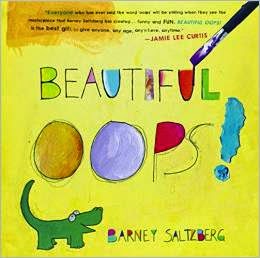This week, I introduced finding the theme of a piece of literature. For the hook/introduction, I used one of my favorite songs,
Am I Wrong by Nico and Vinz. If you haven't listened to the lyrics of this song, they are pretty powerful.
I began by giving my students the lyrics for the song. (I can't share the handout that I gave my students due to copyright laws, but you can easily Google the lyrics.) I read the lyrics aloud, like the song was a poem. It didn't take long before there were whispers. The kids recognized the song. I actually heard one student say, "Do you think she knows this is a song and not a poem?" :)
Then, I had the students fold the handout in half. On the back of their lyrics page, I had them write what they thought the "poem" meant using evidence from the text. The students were then asked to discuss their thoughts and ideas with their assigned talk partner. This got them up and moving.
Once the students returned to their seats, I told the students that we were going to watch the video for the song. At this point, I wanted the students to use the visual, as well as the text, to determine what the song meant.
After watching the video, the kids used the other half of their paper to again write what they thought the message of the song is. Some just confirmed what they had originally thought, others changed their entire thinking. The students went back to their talk partners and grouped themselves with another set of talk partners to make a group of four. The students discussed what they thought the song meant. Before watching the video, some kids actually thought the song was about a boyfriend/girlfriend relationship.
We came back together whole class and discussed the message of the song. Some of the messages that the kids took away were:
* Work hard to achieve your goals
* Be yourself and don't let others tell you who you are
* It's okay to be different-believe in yourself
* The sky is the limit-chase your dreams
* If you can dream it, it can happen
After this, I showed the kids this video in which the artists discuss what events had happened to inspire this song.
This led to a discussion that songs, books, etc. may have different meanings to people because we all have different life experiences and backgrounds (schema).
From this point, I introduced the word THEME to the students and explained how the theme of a story, poem, or drama is the message the author wants you to take away from the piece of literature.

Throughout the week, we did several activities to practice finding the theme of a story. For my mini-lessons, I used two really AWESOME books. Rotten Teeth by Laura Simms and Beautiful Oops! by Barney Saltzberg. Beautiful Oops! is a very simple book, but it is a great one because it teaches the kids that it's okay to make mistakes and sometimes those mistakes can be turned into something beautiful.
During small group or partner practice, the students created their
interactive notebook page. They added some resource pages from my
Finding the Theme: Mission Possible pack to use as a resource while completing task cards (I had to shrink the resource pages to fit). I used task cards from
Deb Hanson and
Rachel Lynette for my partner stations. They also completed a
Deb's Theme-Filled Cupcake Craftivity in their notebooks as well. I had to shrink these down to make them fit, as well.
Interactive notebook activities:
Next week, I plan to continue working on theme because it is SUCH a difficult concept, but adding the nonfiction standard of main idea. I try to teach both of these standards early in the year because they are the two standards that give my students the most trouble. We practice finding the theme in literature and the main idea in informational text all year long.
I'll be back next week with more ideas and tricks for teaching theme and main idea.
Enjoy your weekend! :)


































_cover_art.jpg)










